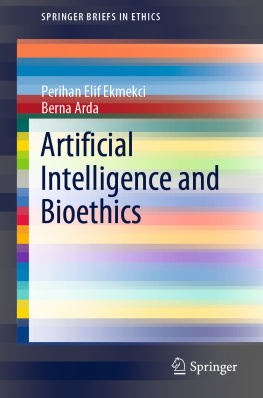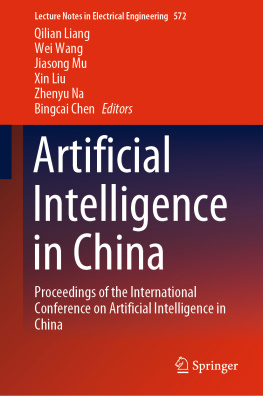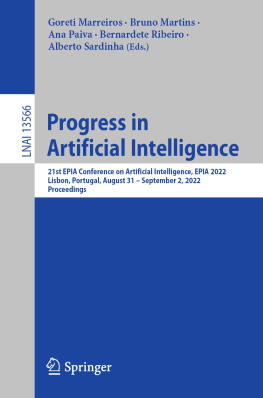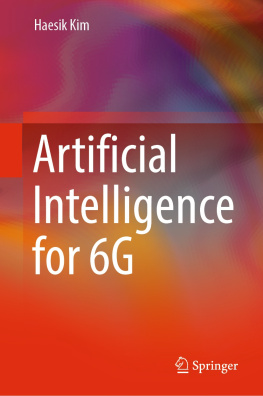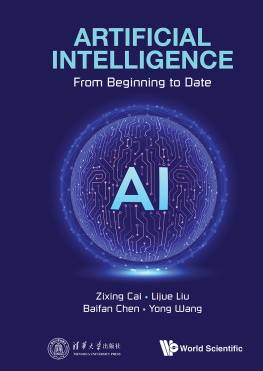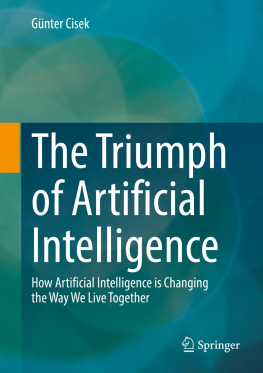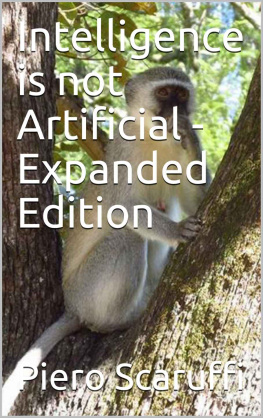Perihan Elif Ekmekci - Artificial Intelligence and Bioethics
Here you can read online Perihan Elif Ekmekci - Artificial Intelligence and Bioethics full text of the book (entire story) in english for free. Download pdf and epub, get meaning, cover and reviews about this ebook. year: 2020, publisher: Springer International Publishing, genre: Romance novel. Description of the work, (preface) as well as reviews are available. Best literature library LitArk.com created for fans of good reading and offers a wide selection of genres:
Romance novel
Science fiction
Adventure
Detective
Science
History
Home and family
Prose
Art
Politics
Computer
Non-fiction
Religion
Business
Children
Humor
Choose a favorite category and find really read worthwhile books. Enjoy immersion in the world of imagination, feel the emotions of the characters or learn something new for yourself, make an fascinating discovery.
- Book:Artificial Intelligence and Bioethics
- Author:
- Publisher:Springer International Publishing
- Genre:
- Year:2020
- Rating:4 / 5
- Favourites:Add to favourites
- Your mark:
- 80
- 1
- 2
- 3
- 4
- 5
Artificial Intelligence and Bioethics: summary, description and annotation
We offer to read an annotation, description, summary or preface (depends on what the author of the book "Artificial Intelligence and Bioethics" wrote himself). If you haven't found the necessary information about the book — write in the comments, we will try to find it.
Artificial Intelligence and Bioethics — read online for free the complete book (whole text) full work
Below is the text of the book, divided by pages. System saving the place of the last page read, allows you to conveniently read the book "Artificial Intelligence and Bioethics" online for free, without having to search again every time where you left off. Put a bookmark, and you can go to the page where you finished reading at any time.
Font size:
Interval:
Bookmark:
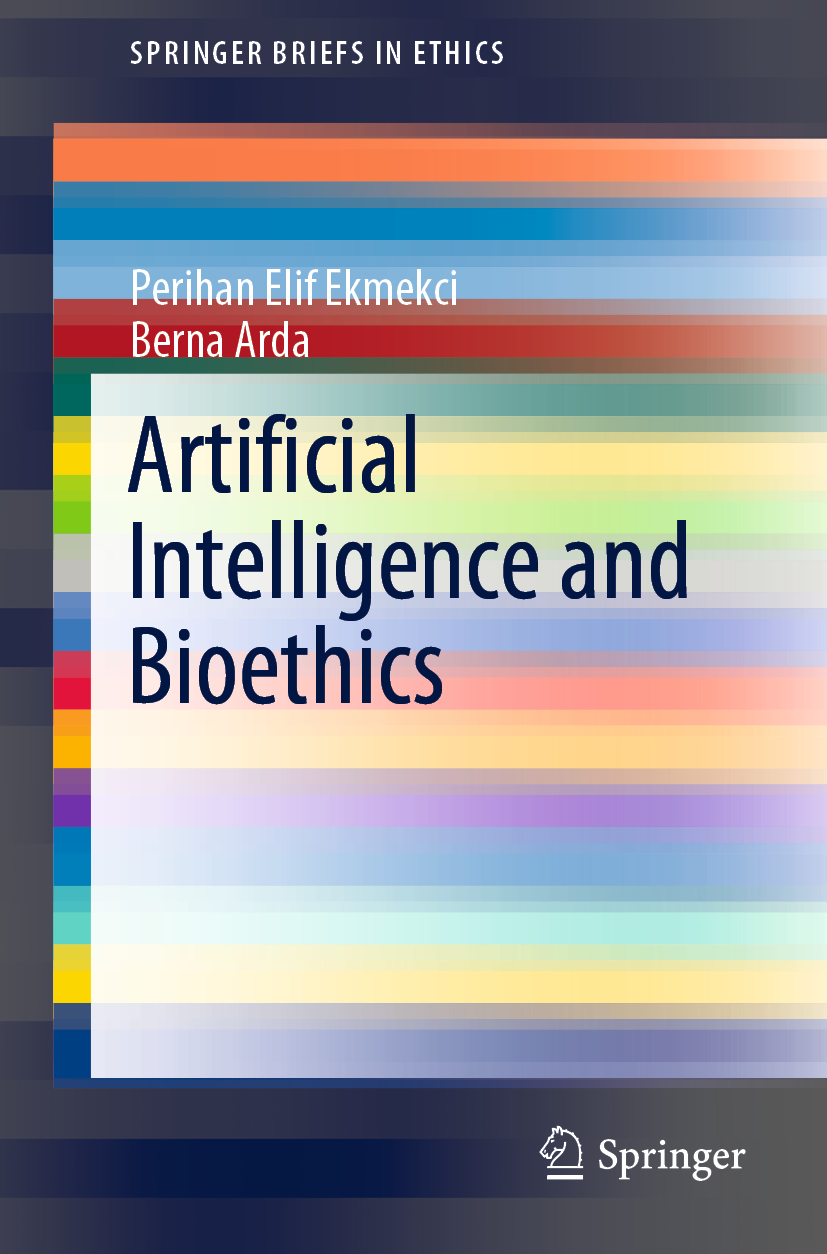
Springer Briefs in Ethics envisions a series of short publications in areas such as business ethics, bioethics, science and engineering ethics, food and agricultural ethics, environmental ethics, human rights and the like. The intention is to present concise summaries of cutting-edge research and practical applications across a wide spectrum. envisions a series of short publications in areas such as business ethics, bioethics, science and engineering ethics, food and agricultural ethics, environmental ethics, human rights and the like. The intention is to present concise summaries of cutting-edge research and practical applications across a wide spectrum.
Springer Briefs in Ethics are seen as complementing monographs and journal articles with compact volumes of 50 to 125 pages, covering a wide range of content from professional to academic. Typical topics might include: are seen as complementing monographs and journal articles with compact volumes of 50 to 125 pages, covering a wide range of content from professional to academic. Typical topics might include:
Timely reports on state-of-the art analytical techniques
A bridge between new research results, as published in journal articles, and a contextual literature review
A snapshot of a hot or emerging topic
In-depth case studies or clinical examples
Presentations of core concepts that students must understand in order to make independent contributions
More information about this series at http://www.springer.com/series/10184

This Springer imprint is published by the registered company Springer Nature Switzerland AG
The registered company address is: Gewerbestrasse 11, 6330 Cham, Switzerland
When the effort to understand and explain the universe is combined with human creativity and future design, we see works in the field of science fiction. One of the pioneers of this combination was undoubtedly Jules Verne and his brilliant works. His book From the Earth to the Moon, published in 1865, was one of the first examples of the genre of a science fiction novel. However, science fiction has always been ahead of its era. A real journey to the moon was accomplished only in 1969, about a century after the publication of the book.
The twentieth century was a period in which scientific developments progressed with giant steps. In the twenty-first century, we are now in an age in which scientific knowledge increases logarithmically, and the half-life of knowledge is very short. The amount of information to be possessed has grown hugely and varied so much that it has reached a level that is well above human control.
The book you are holding is about Artificial Intelligence (AI) and bioethics. It is intended to draw attention to the value problems of an enormous phenomenon with uncertain limits on human creativity. The book consists of the following chapters.
The first section is History of Artificial Intelligence. In this section, a historical perspective of the development of technology and AI is presented. We take a quick tour from ancient philosophers to Rene Descartes, from Lady Ada to Alan Turing, the prominent pioneers of the AI concept who contributed to philosophy and actual creation of this new phenomenon of whom some suffered many injustices during their lifetimes. This section ends with a short description of the state of the art of AI.
The second section is Definitions. This section aims to explain some of the key terms used in the book to familiarize them with readers. We also aim to search the answer to the following question: what makes an entityhuman or machineintelligent? In the face of this fundamental question, relevant concepts such as strong AI, weak AI, heuristic, Turing test, which have become increasingly clear over time, have been discussed separately in the light of literature.
The Personhood and Artificial Intelligence section address a fundamental question about the ethical agency of AI. Personhood is an important philosophical, psychological, and legal concept for AI because of its implications about moral responsibility. Didnt the law build all punishment on the admission that individuals with personhood should at the same time be responsible for what they do (and sometimes do not)? Until recently, we all lived in a world dominated by an anthropocentric approach. Human beings have always been at the top of the hierarchy among all living and non-living entities and ever the most valuable. However, the emerging of AI and its potential to improve into human-level or above human-level intelligence challenges human beings superior position by claiming to be acknowledged to have personhood. Many examples of daily life, such as autonomous vehicles, military drones, early warning systems, are discussed in this section.
The following section is on bioethical inquiries about AI. The first question is on the main differences between conventional technology and AI and if the current ethics of technology can be applied to ethical issues of AI.
After discussing the differences between conventional technology and AI and justifying our arguments about the need for a new ethical frame, we highlight the bioethical problems arising from the current and future AI technologies. We address the Asilomar Principles, the Montreal Declaration, and the Ethics Guidelines for Trustworthy AI of the European Commission as examples of suggested frameworks for ethics of AI. We discuss the strengths and weaknesses of these documents. This section ends with our suggestion for the fundamentals of the new bioethical frame for AI.
Font size:
Interval:
Bookmark:
Similar books «Artificial Intelligence and Bioethics»
Look at similar books to Artificial Intelligence and Bioethics. We have selected literature similar in name and meaning in the hope of providing readers with more options to find new, interesting, not yet read works.
Discussion, reviews of the book Artificial Intelligence and Bioethics and just readers' own opinions. Leave your comments, write what you think about the work, its meaning or the main characters. Specify what exactly you liked and what you didn't like, and why you think so.

